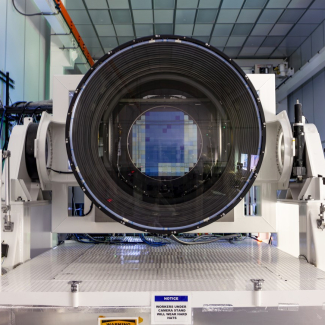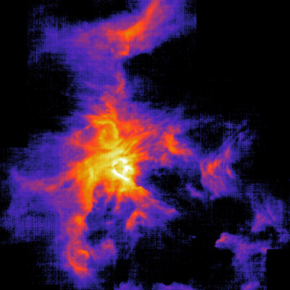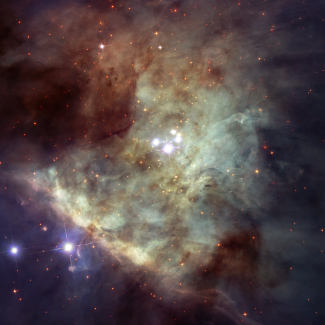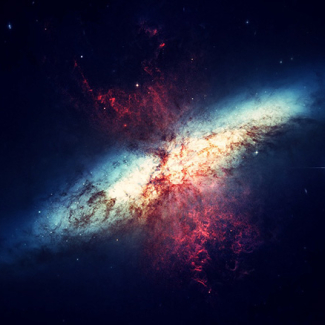
Massive stars make waves
Our Milky Way galaxy includes approximately 100 billion stars, most of which were formed when it was half as old as it is today. Over time, the pace of star formation in the Milky Way has slowed considerably. CNRS researchers and their international colleagues1 have now provided a novel explanation for this phenomenon. They demonstrate that the stellar winds produced by massive stars disturb the gas clouds in which stars like the Sun take shape, thereby slowing their formation. NASA’s SOFIA observatory let them map the “footprint” left by these stellar winds on gas clouds of the Orion Nebula (see figure). The scientists were able to measure the amount of energy added to such clouds with unprecedented precision. Their data reveal that the impact of stellar winds is even greater than that of supernovas, which are widely considered to be the most violent phenomena in the universe. The researchers’ findings are published in Nature (January 7, 2019).

© NASA / C. Pabst et al. Nature (2019)
Video of the stellar winds' “footprint” on gas clouds of the Orion Nebula.
- 1Institut de Recherche en Astrophysique et Planétologie (CNRS / Université Toulouse III—Paul Sabatier), Institut de Radioastronomie Millimétrique, Leiden Observatory, University of Cologne Institute of Physics I, Instituto de Física Fundamental (CSIC), Telespazio Vega UK Ltd for ESA/ESAC, Universities Space Research Association/SOFIA, NASA Ames Research Center, University of Maryland Department of Astronomy, and Max-Planck Institute for Radio Astronomy.
Disruption of the Orion Molecular Core 1 by the stellar wind of the massive star θ1 Ori C. C. Pabst, R. Higgins, J.R. Goicoechea, D. Teyssier, O. Berne, E. Chambers, M.Wolfire, S. Suri, R. Guesten, J. Stutzki, U.U. Graf, C. Risacher, A.G.G.M.Tielens. Nature, le 7 janvier 2019. http://dx.doi.org/10.1038/s41586-018-0844-1


